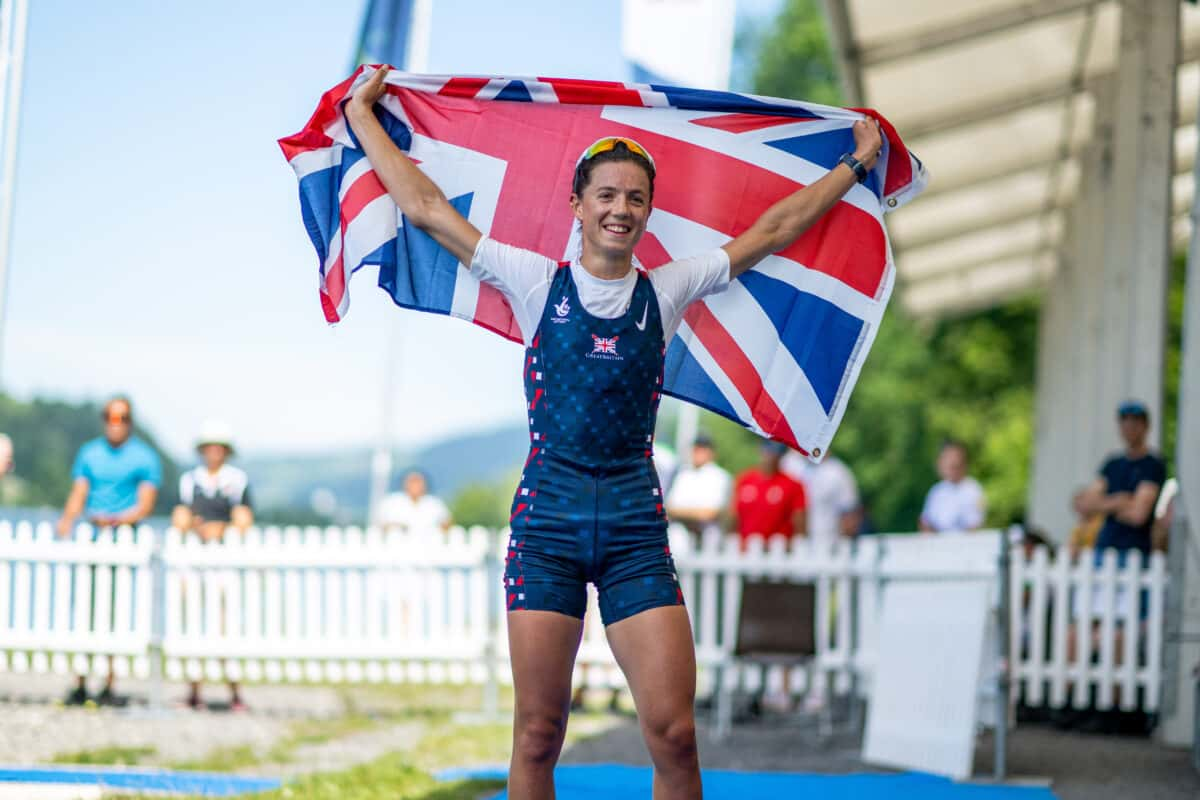
21 Jun 2023
Grant stamps her mark in record books
The 2023 World Rowing Cup II in Varese at the weekend was a fast one – over the course of the semi-finals and finals, six World Best Times were broken in ideal racing conditions.
The first to fall was in the Lightweight Women’s Double Sculls, as Great Britain’s Emily Craig and Imogen Grant won their semi-final in a blistering 6:40.47, nearly a second quicker than the previous best of 6:41.36 set by Valentina Rodini and Federica Cesarini of Italy in the semi-finals at the Tokyo 2020 Olympic Games. The Italians’ time broke Grant and Craig’s record set in the previous semi-final, about 10 minutes earlier.
The Varese record puts Grant in a small and elite group of rowers who have held more than one World Best Time at once – last year at World Rowing Cup III in Lucerne she set a time of 7:23.36 for the Lightweight Women’s Single Sculls.
Only four other people currently hold two World Best Times, all New Zealanders. Eric Murray and Hamish Bond have the best times for both the Men’s Coxless Pair and Men’s Coxed Pair; their compatriots Grace Prendergast and Kerri Williams hold best times in the Women’s Coxless Pair and Women’s Four. And for several years, the Netherlands’ Ilse Paulis also held the LW2x best time, along with the World Best Time for the Lightweight Women’s Quadruple Sculls.
Grant says the crew were aware that conditions at Varese were fast when race planning before the semi-finals.
“For us, anything under 6:50 is pretty quick. We knew that things were quite quick and conditions were likely to be the same the next day,” Imogen Grant says.
Grant adds that going out to set a best time is often not a great strategy – chasing speed can be detrimental. However, World Best Times are key to many rowers’ training programmes, and the British LW2x is no exception.
“It’s an interesting one, because you can’t go out looking for world best times, but a lot of our training is dictated towards them. We often use percentage of gold medal times during training to dictate what splits we should be aiming for,” she explains.
“The World Best Time and gold medal times are really impacting us every single day, but the ability to set one is so niche, you don’t really get those chances very often. It’s not like a swimming pool where the water’s the same temperature the whole time or an indoor sport where conditions are controlled,” Grant continues.
She says the warm water at Varese, coupled with a tailwind that was just strong enough, was key to the weekend’s speed. In fact, the LW2x times on Saturday were quicker than the Women’s Double Sculls, although that changed for Sunday’s finals.
The LW2x final in Varese was not as fast as the semi-finals, but it was a thriller, which Grant and Craig won by 0.08 seconds.
“We were going into that race knowing that under no uncertain terms we would be taking it right to the line,” Grant says. “When the Americans [Molly Reckford and Michelle Sechser] made a big push through the k I nearly lost sight of them in my peripheral vision and I remember thinking at that point we might get silver.”
But Craig and Grant put their heads down and made sure each stroke counted to take the win.
The focus now is on continuing to build speed. As Grant points out, with so much training based around World Best Times, a new record just raises standards further.
As for holding two best times at once, she says: “It’s a nice accolade to have, and it’s a very cool group of people to be part of. I’m very glad that this LW2x one has stood for a little bit longer already.”

